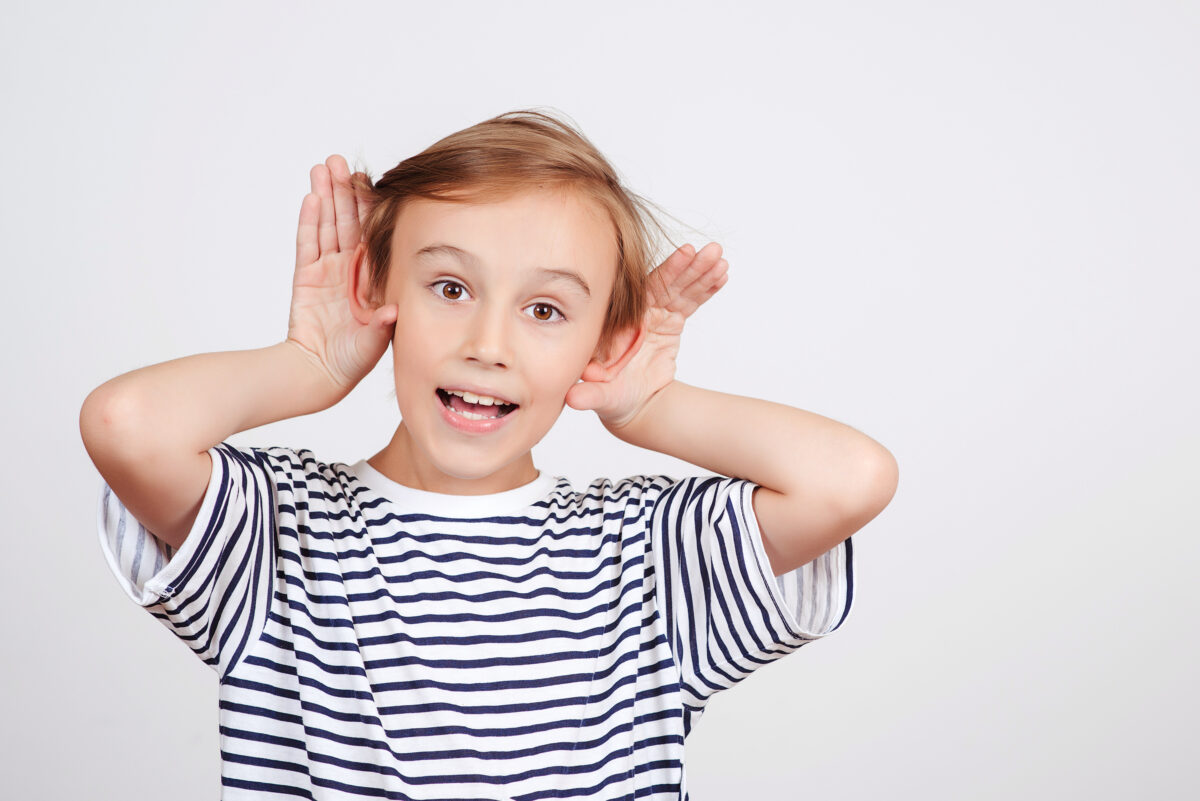
Are you interested in learning more about sensory under responsivity? Are you a parent or maybe a therapist or caregiver hoping to learn more about sensory processing and sensory under responsivity?
If so this post is for you. The first step in helping a child with sensory under responsivity is to understand more about what it is, After that, I have some recommended strategies for you to implement at home to help that special little kiddo.
This post was created by Marra Robert, OTD, OTRL and contains affiliate links.
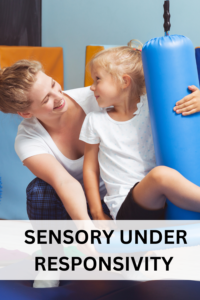
Parenting is an incredible journey, filled with joy, challenges, and the occasional mystery. If your child seems unusually laid-back, unfazed by sensory stimuli, or perhaps even always seeking sensory input in their environment, they may be experiencing sensory under responsivity.
Hi! My name is Marra and I’m a mama and a pediatric occupational therapist who has years of experience working with children with sensory processing difficulties and helping their parents navigate the ups and downs of child development.
I loved being a support person for parents learning about sensory processing, sensory under responsivity, and strategies for them to implement at home to help with their child’s individual sensory needs.
In this blog post, we’ll delve into what sensory under responsivity is, how it manifests in children, and most importantly, explore practical strategies to support your child’s sensory processing needs.
What is sensory processing?
Sensory processing refers to our ability to receive and interpret information from our surrounding environment through eight sensory systems. This capacity allows us to understand the sensory world around us and choose an appropriate response.
While you might be familiar with the traditional five senses—sight, hearing, smell, taste, and touch—there are three additional sensory systems that are not commonly known but that are equally important.
The vestibular sense is linked to our perception of movement and response to gravity. It is how we stay balanced while we move around our environment.
The proprioceptive sensory system involves our sense of deep pressure and body awareness. Interoception is the perception of internal bodily sensation and how our bodies are feeling.
If you’re interested in delving deeper into sensory processing and the eight sensory systems, check out the linked post for more information.
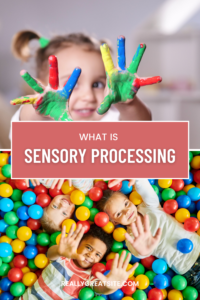
understanding sensory under responsivity
For some children, the typical response to sensory input may be altered, leading to difficulties such as sensory under responsivity. This means that the child’s nervous system doesn’t register or respond appropriately to sensory stimuli, causing them to appear indifferent, unresponsive, or seeking more sensory inout.
We all need sensory input in order to maintain a calm and regulated state throughout our day. Children with sensory under responsivity need more sensory input in order to maintain a regulated state because they have a low registration for sensory input,
common signs of sensory under responsivity
Identifying sensory under responsivity in children can be challenging, as the signs may be subtle and easily mistaken for other behaviors. Here are some common indicators to look out for:
1. Low Energy Levels Children with sensory under responsivity may seem lethargic or have difficulty getting motivated.
2. Limited Reaction to Stimuli: They may not react as expected to loud noises, bright lights, or even pain, often displaying a lack of awareness or response.
3. Poor Motor Coordination: Challenges with fine and gross motor skills may be evident, as the child may not seek out movement experiences.
4. Limited Exploration: Children with sensory under responsivity may show a lack of interest in exploring their environment or trying new activities.
5. Difficulty with Transitions: Changes in routine or transitions between activities may be particularly challenging for these children.
Now that we’ve identified some potential signs, let’s explore effective strategies to support children with sensory under-responsivity.

Creating a sensory friendly environment
1. Establish a Consistent Routine: Predictability is key for children with sensory under responsivity. Establishing a consistent routine provides a sense of security and helps them navigate their environment with greater ease.
2. Provide Clear Expectations: Clearly communicate what is expected of your child in different situations. Knowing what to anticipate can help reduce anxiety and improve their ability to engage.
3. Create a Sensory Diet: A sensory diet is a personalized plan that incorporates activities and experiences to support a child’s sensory needs. Work with an occupational therapist to develop a sensory diet tailored to your child’s specific under responsive sensory areas.
4. Offer Sensory-rich Activities: Engage your child in activities that stimulate their senses. This could include activities like finger painting, playing with textured materials, or exploring different scents.
5. Break Tasks into Manageable Steps: When introducing new activities or tasks, break them down into smaller, more manageable steps. This helps your child process information more effectively and increases the likelihood of successful completion.

Encouraging movement and physical activity
1. INCORPORATE regular physical activity

Physical activity is a powerful tool for regulating the nervous system. Encourage activities such as jumping on a trampoline, swinging, or engaging in sports to help your child stay active.
2. Weighted Blankets: Deep pressure input

Weighted blankets, vests, or lap pads can provide a comforting and grounding sensation, helping to increase awareness of the body’s position in space.. They provide calming deep pressure sensory input to help calm the body and regulate the nervous system.
3. PROMOTE VESTIBULAR ACTIVITIES
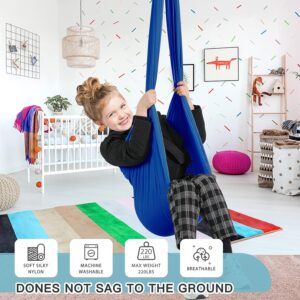
Activities that involve movement, such as swinging or spinning, can be beneficial for children with sensory under responsivity. Ensure that these activities are introduced gradually to avoid overwhelming your child.
4. EXPLORING DIFFERENT TEXTURES
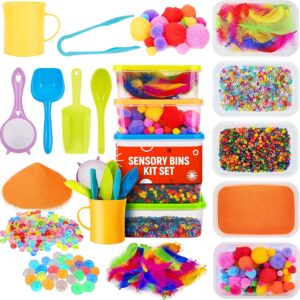
Introduce a variety of textures through play. Sensory bins filled with materials like sand, rice, or beans offer tactile experiences that can be both stimulating and calming. They challenge your child’s sensory processing skills in a new way.
BUILDING EMOTIONAL REGULATION SKILLS
1. Teach Mindfulness Techniques: Mindfulness exercises, such as deep breathing, yoga, or guided imagery, can help children become more aware of their internal state and regulate their emotions.
2. Provide a Safe Space: Designate a specific area where your child can retreat when feeling overwhelmed. This space should be equipped with comfort items, such as soft pillows or cozy blankets.
3. Use Visual Supports: Visual supports, such as visual schedules or social stories, can help your child understand and navigate social situations, reducing anxiety and improving overall emotional regulation.
4. Encourage Expressive Arts: Artistic activities, such as drawing or music, provide a non-verbal outlet for emotional expression. Encourage your child to explore these creative avenues as a means of processing emotions.
COLLABORATE WITH professionals
1. Consult with an Occupational Therapist: An occupational therapist specializing in sensory processing can conduct a thorough assessment of your child’s needs and develop a personalized intervention plan.
2. Work with Educators: Collaborate with your child’s teachers to implement sensory-friendly strategies in the classroom. Providing a consistent approach across environments enhances the effectiveness of sensory interventions.
3. Seek Support from a Mental Health Professional: If your child is struggling with emotional regulation or behavioral challenges, consider consulting a mental health professional who specializes in working with children with sensory processing difficulties.

Parenting a child with sensory under responsivity comes with its unique set of challenges, but with the right strategies and support, you can help your child thrive. Remember, every child is unique, so it may take time to discover which strategies work best for your little one.
By creating a sensory-friendly environment, incorporating movement and physical activities, fostering emotional regulation skills, and collaborating with professionals, you can empower your child to navigate the world with confidence and resilience. Together, let’s celebrate the uniqueness of every child and provide them with the tools they need to succeed.
